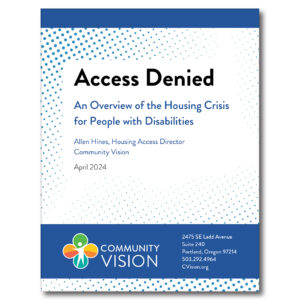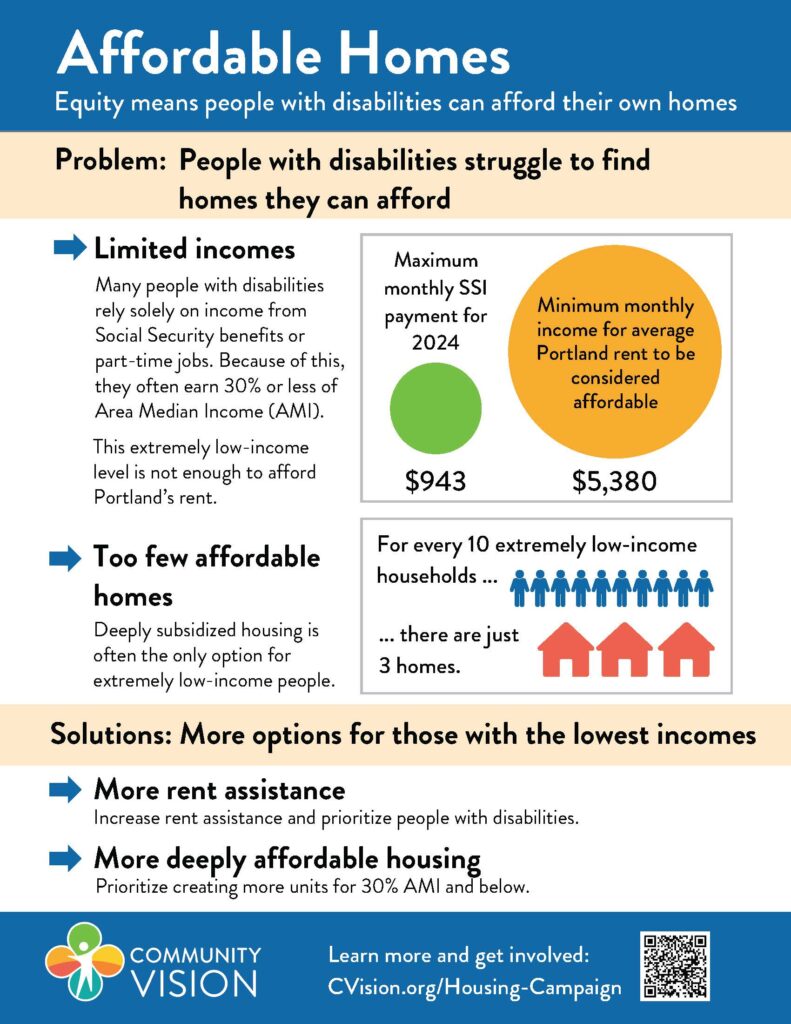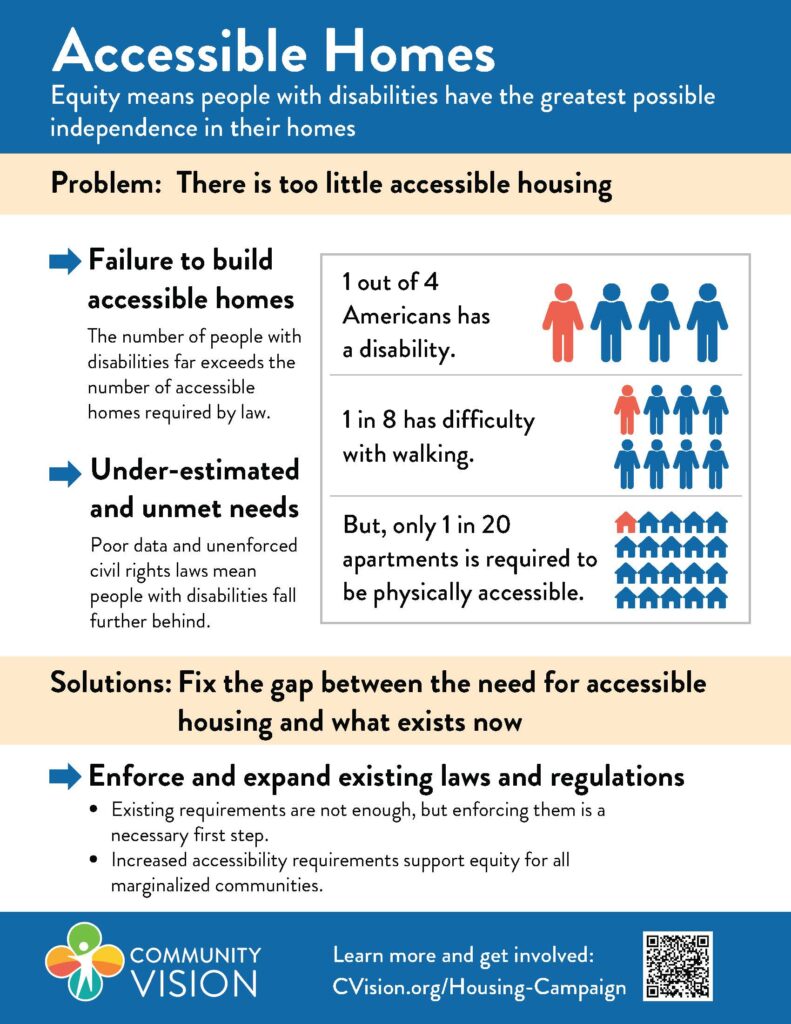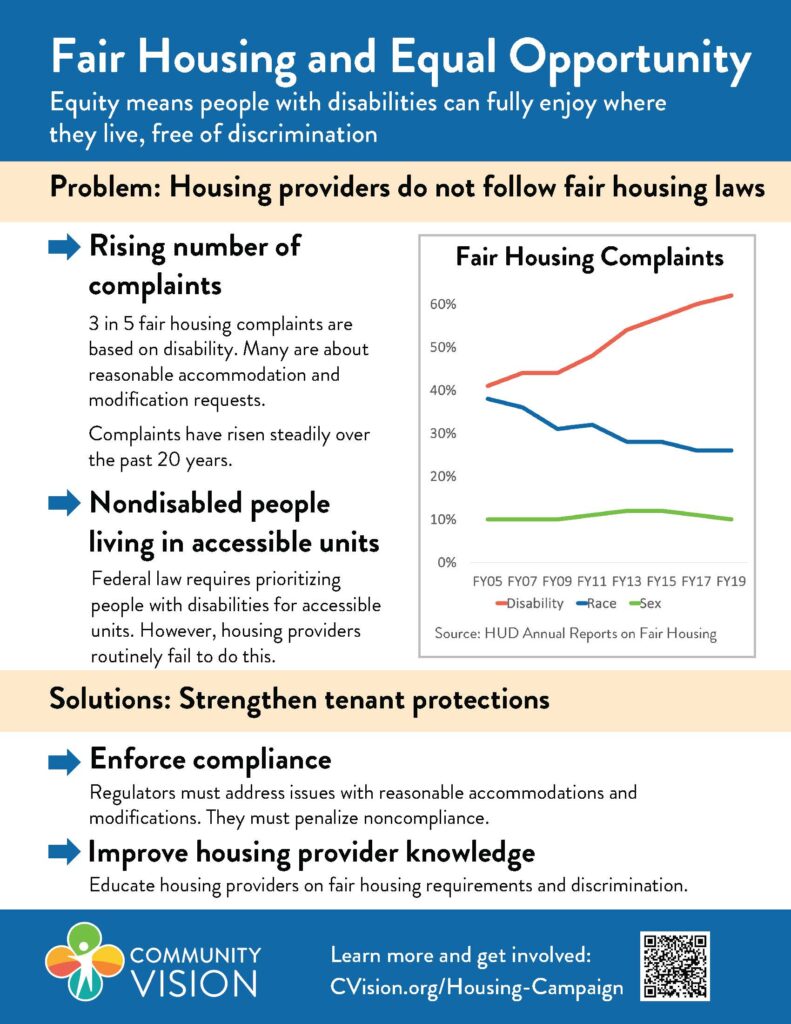Campaign for Affordable, Accessible Housing
People with Disabilities and the Housing Crisis

People with disabilities face unique challenges in the housing crisis. Many of these barriers are the result of how society treated people with disabilities in the early and mid-20th century. Institutionalization and segregation removed them from discussions and planning around housing. Beginning in the late 1960s, civil rights laws for the disability community started to address some of this exclusion.
Community Vision wants to build on this shift and expand inclusion and independence for people with disabilities. Accessible, affordable housing is fundamental to creating this equity.
As Oregon works to meet the housing needs of people across the state, we are raising awareness of how the housing crisis impacts people with disabilities. We are advocating alongside people with disabilities for policies that create more affordable, accessible housing and prioritize housing for people with disabilities.
The Need: More Accessible Housing
People with disabilities and older adults struggle to find accessible, affordable housing. There simply is not enough housing to meet this need. Learn more about key barriers to housing in our report “Access Denied: An Overview of the Housing Crisis for People with Disabilities” (see below).
The Solution: SB 444
We can solve unmet accessible housing needs in Oregon by changing our state’s laws. The Oregon Housing Accessibility Act of 2025 or SB 444 seeks to address the severe unmet need for accessible housing in Oregon.
The Oregon Housing Accessibility Act of 2025 seeks to address the severe unmet need for accessible housing in Oregon. SB 444 will:
- Require more units being built to meet the federal accessibility standard.
- Require more units being built to meet the Type A accessibility standard.
- Expand current design and construction requirements to include triplexes.
State funding requirements
Requires that 10 percent of units in projects with 10 or more units that receive public funding be accessible. Currently, only 5 percent of units in a project being built with federal funding are required to be accessible.
Building codes requirements
Requires that 10 percent of units in projects with 10 or more units be built to meet Type A accessibility standards meaning they include features like U-shaped kitchens. Currently, just 2 percent of units in buildings with 20 or more units are required to have accessibility features, like grab bars, to meet Oregon’s structural specialty code.
Fair Housing requirements
Expands the Fair Housing Act’s design and construction requirements to include triplexes. Right now, the requirements only cover projects with four or more units.
Access Denied
Our report “Access Denied: An Overview of the Housing Crisis for People with Disabilities” examines the problems people with disabilities face when trying to find a home. The report:
- Explores housing affordability. People with disabilities experience inequities in income. Part-time employment, restrictions on Social Security income, and not enough rental assistance limit the rent they can afford. This profoundly impacts housing choice.
- Exposes the limited number of accessible homes. Current accessibility standards do not match the need for accessible housing. In addition, accessible units are difficult to find due to widespread noncompliance with accessibility standards.
- Examines how fair housing and equal opportunity laws are not being followed. Housing providers are failing to grant reasonable accommodation requests and to match people with disabilities to accessible homes.
Additional Materials
1-page summaries of priority advocacy areas:
Read More about Our Housing Advocacy Work
For more, see our recent stories on our housing advocacy work.
Contact
Allen Hines
Housing Access Program Director
(971) 263-0048
ahines@cvision.org




